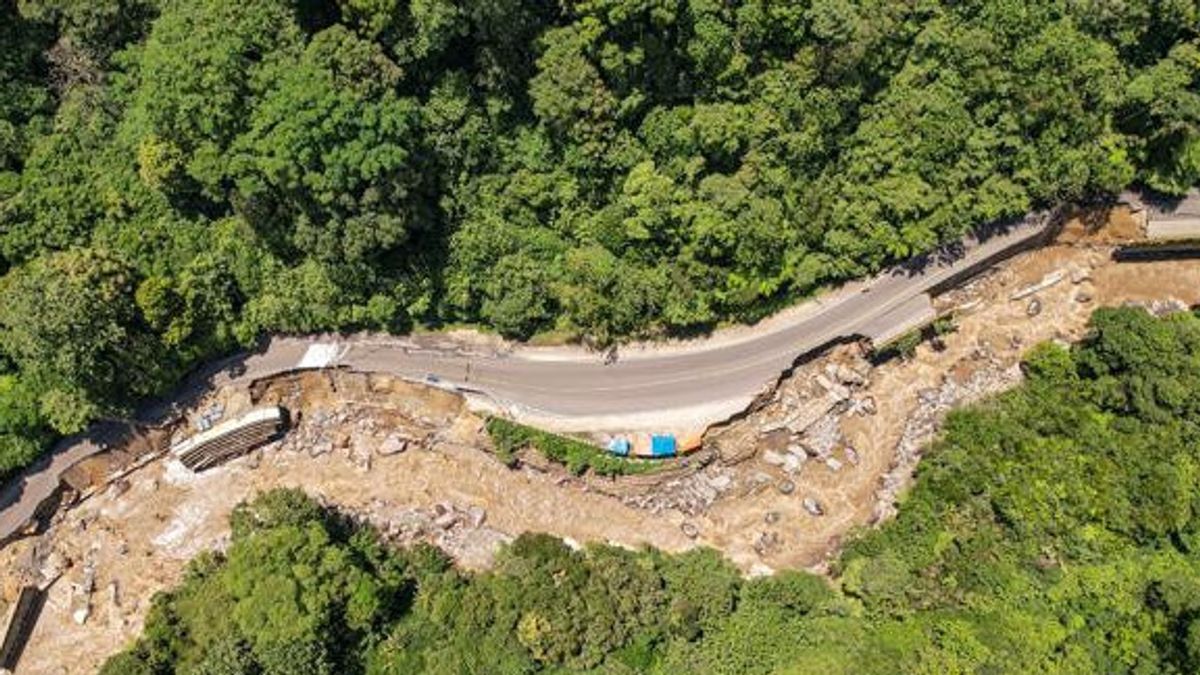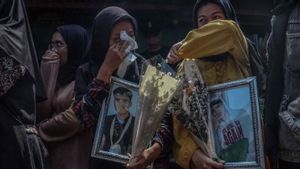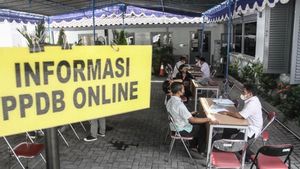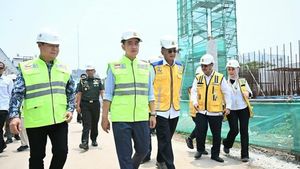JAKARTA The flash floods and lahars that occurred in three areas in West Sumatra made grief. In addition to destroying a number of buildings, cutting off the main Padang-Bukittingi road, this incident also claimed dozens of lives. Environmental groups say this happened due to massive development without paying attention to the environment.
The flash flood disaster in the Mount Marapi area, West Sumatra, occurred on Saturday (11/5/2024). The head of the Meteorology, Climatology and Geophysics Agency, Dwikorita Karnawati, said that the main trigger for flash floods mixed with mountain lava was heavy rain with a long enough duration.
Based on the analysis on May 8, 2024, it was found the potential for moderate to very heavy rain in the West Sumatra region. At that time, BMKG had issued early warnings of potential extreme weather that could lead to hydrometeorological disasters such as floods, landslides, and others in West Sumatra.
CAFE DENGAN PEMANDANGAN MEMUKAU XAKAPA ITUPUN HILANG DITELAN GALODO !#PrayForSumbar #Xakapa @DrEvaChaniago @MIrvanDarwin1 @NediSetiadi @Zulhendribasri1 @RatunyaTagar @5teV3n_Pe9eL @infoBMKG @infoSumbar @Minang_cyber @oaseminang pic.twitter.com/ffzEOzEgaI
— ANTON al إِنْدُوْنِيْسِيَا 🇮🇩 (@AntonPr12594871) May 13, 2024
CAFE WITH A VIEW OF MEMUKAU XAKAPA WAS LOST TO GALODO! #PrayForWest #Xakapa @DrevaChaniago @MirvanDarwin1 @NediSetiadi @Zulhendribasri1 @RhenyaTagar @5teV3n_Pe9el @infoBMKG @infoSumbar @Minanga_cyber @oaseminang pic.twitter.com/ffzEOzEgaI
BMKG has also asked the public, especially those in disaster-prone areas, to be aware of extreme weather from May 9 to 12.
On May 11, there was heavy rain from evening to night, causing flash floods followed by lava to hit Agam Regency, Tanah Datar, and Padang Panjang City.
As of Monday (13/5) at 16.30 WIB, the National Disaster Management Agency (BNPB) stated that 47 people died due to cold lava floods from Mount Marapi and flash floods in the three areas, with details of 20 from Agam Regency, 23 in Tanah Datar Regency, two people in Padang Pariaman Regency, and two victims from Padang Panjang City.
Apart from causing dozens of people to die. Flash floods in the province also resulted in hundreds of houses and other buildings being lightly to heavily damaged, such as 193 houses in Agam Regency and 84 houses in Tanah Datar.
Public infrastructure facilities such as bridges to places of worship are not affected. Traffic conditions from Tanah Datar Regency to Padang and Solok were even reported to be completely paralyzed.
Citing the BNPB page, flash floods are floods that suddenly come with a very large amount of water discharge. This usually happens because of a water dam in the river flow. Flash floods can occur due to extreme rainfall, as experienced in three areas in West Sumatra.
Recently, flash floods and lahars have often occurred in a number of areas around Mount Marapi. In the last six months, there have been three flash floods recorded in the area.
Two days after the eruption of Gung Marapi which killed 24 people, flash floods and lava hit a number of areas in Tanah Datar Regency on December 5, 2023.
Lahar floods hit hot springs in Nagari Pariangan, mosques, and houses of residents in Nagari Batubasa, as well as damaged the bridge in Nagari Baringin.
On February 23, 2024, Tanah Datar Regency was again hit by flash floods, precisely in Nagari Barulak. A total of 27 houses, five bridges, tens of hectares of agricultural land were affected.
Less than two months later, on April 5, cold lava floods hit a number of areas in Agam Regency and Tanah Datar Regency. This happened two days after the eruption of Mount Marapi which ejected volcanic ash up to a height of 1.5 km.
As a result of this incident, at least 61 houses, 38 business places, and 16.5 hectares of rice fields were damaged.
In this month's flash flood disaster, heavy rains caused river water that originates in Mount Marapi to overflow, creating a flow on a new route that carries large stones from the most active volcano in Sumatra to settlements around it.
"Because of the heavy rain, he made a separate route. This flood was followed by large rock material from Mount Marapi," said Budi, the Head of the Agam Regency Regional Disaster Management Agency (BPBD).
The Indonesian Forum for the Environment (Walhi) has actually 'ramad' this disaster since the last few years, as stated by West Sumatra's Walhi Executive Director Wengki Purwanto. He said what is happening in West Sumatra is now an ecological disaster because it is a natural management system.
Exploitation of excessive natural resources as well as development that is not based on disaster mitigation has caused flash floods and lahars that have been repeated lately. Wengki gave an example of the logging and clearing of oil palm plantations in and around Kerinci Seblat National Park (TNKS), as well as gold mining in the TNKS buffer zone.
"This happens continuously from year to year. As a result, every year the disaster repeats itself. Even in one year it gets more frequent, the closer the distance between one disaster and the next disaster," Wengki explained.
Walhi West Sumatra found indications of land clearing for illegal logging covering an area of 50 hectares in Nagari Padang Air Cold, South Solok Regency, and an area of 16 hectares in Nagari Sindang Lunang, South Coast Regency. This is based on monitoring and analysis of satellite imagery for the August-October 2023 period.
In addition, Wengki also highlighted the illegal development in Anai Valley in Tanah Datar Regency. The area is a tourist location that is crowded with residents because there are large cafes, baths and mosques there. In fact, the plan is to build hotels and the West Sumatra Provincial Government to plan to build plazas in the area.
Even though the Anai Valley has the status of a protected forest and a nature reserve. Wengki also said that the area is prone to disasters such as floods or landslides. And what was feared was that on Saturday, a large flood that swept up cafes and baths there.
SEE ALSO:
"The Water Resources Council has given recommendations in early 2023, that the area must be put in order. It is impossible there are activities that gather large numbers of people, because it is the same as making mass graves. Well, in 2024 everything will really be washed away, right," said Wengki.
Exploitation of natural resources and reckless development, plus the activities of Mount Marapi led to an accumulation of crises.
"This crisis continues to accumulate from year to year, piles up. Yes, it is natural that the intensity of extreme rain like these days, finally we harvest disaster," said Wengki.
The English, Chinese, Japanese, Arabic, and French versions are automatically generated by the AI. So there may still be inaccuracies in translating, please always see Indonesian as our main language. (system supported by DigitalSiber.id)














